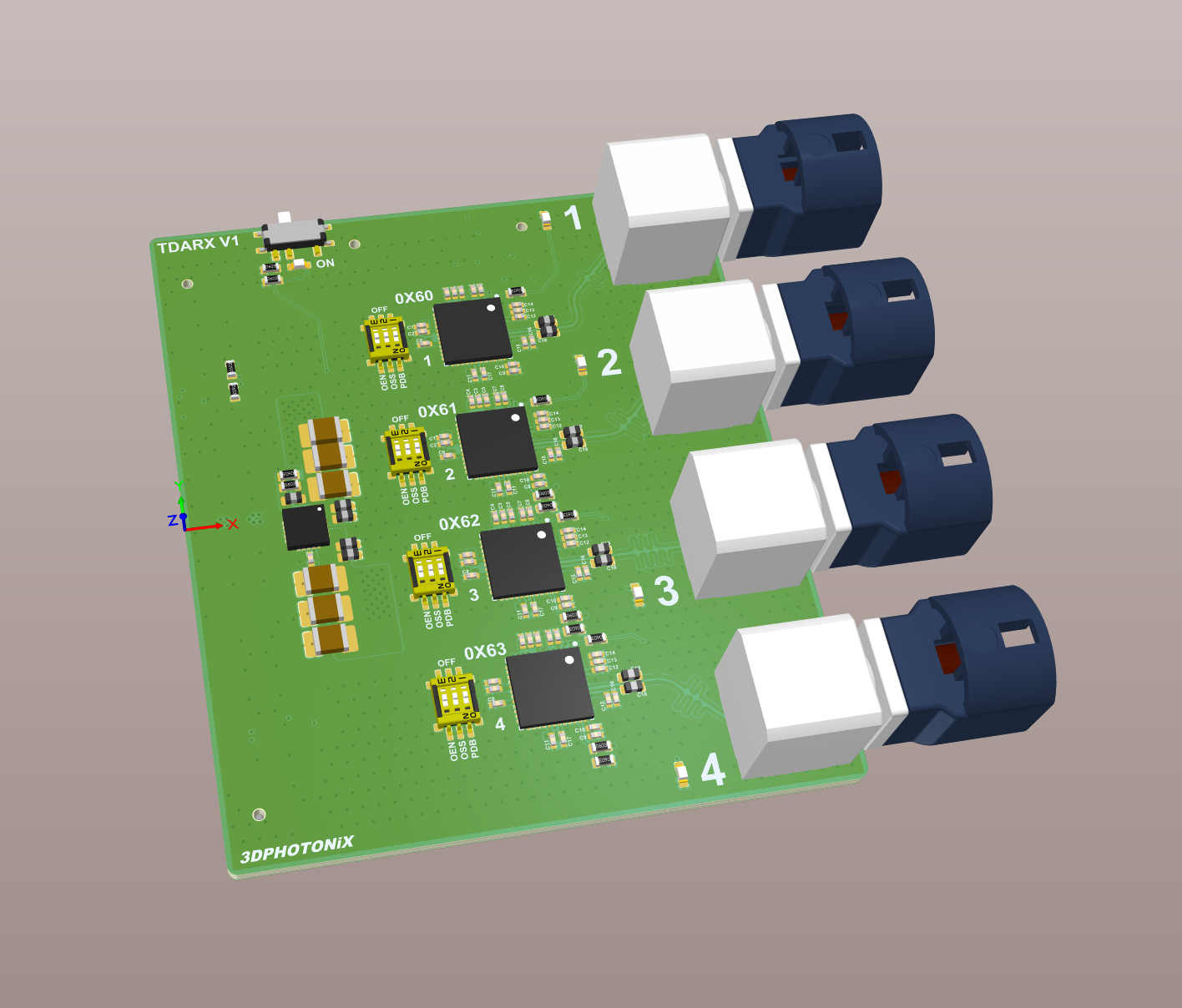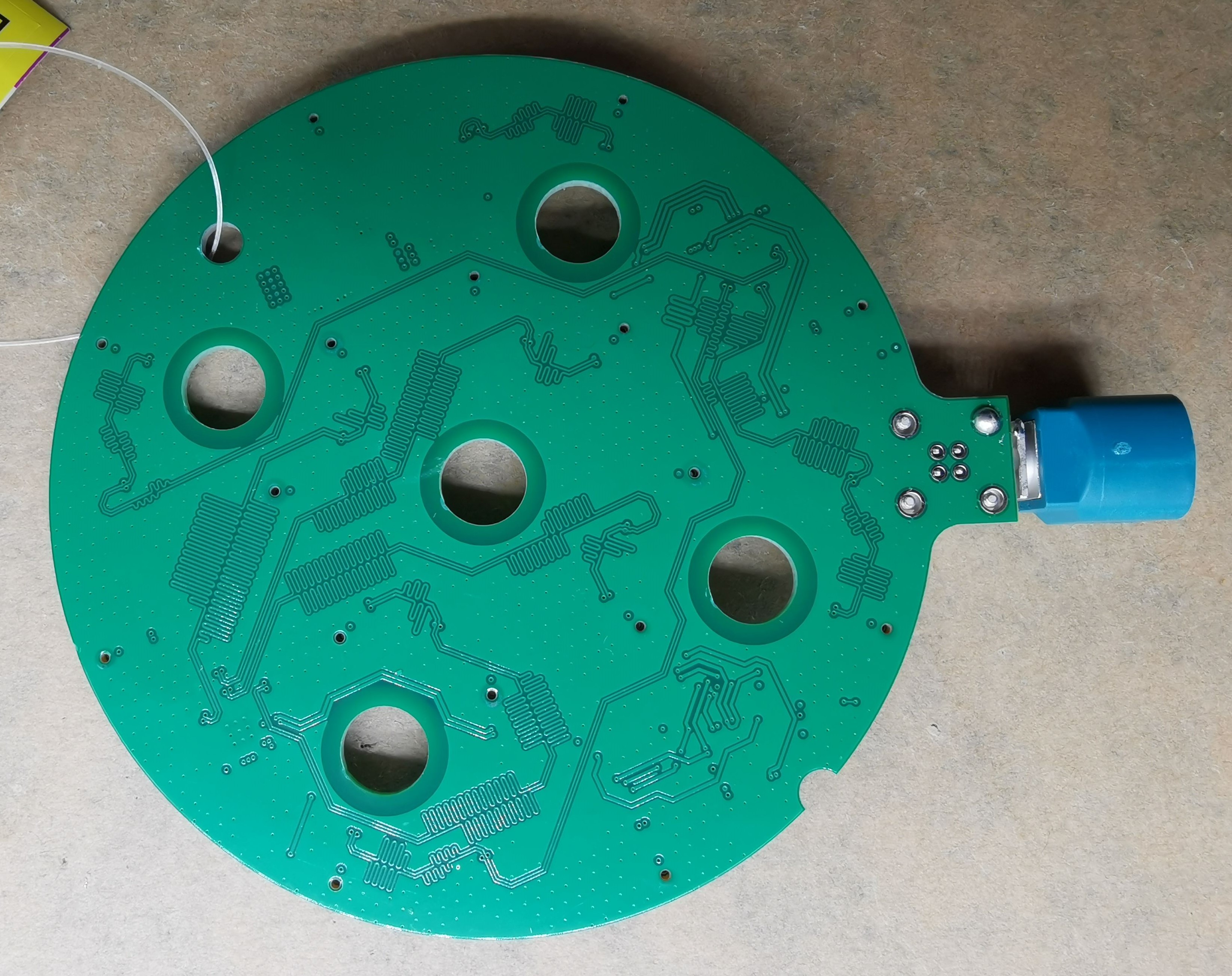This automotive R&D project required the design of a high-channel-count MEMS microphone acquisition system capable of delivering synchronized, low-latency, and phase-accurate audio to an FPGA for beamforming and noise source localization.
The solution supports up to 64 MEMS microphones organized into modular circular arrays of 16 microphones each, connected via automotive-grade high-speed serial links. The design ensures timing coherence, signal integrity, and EMI immunity in the demanding conditions of in-vehicle testing.
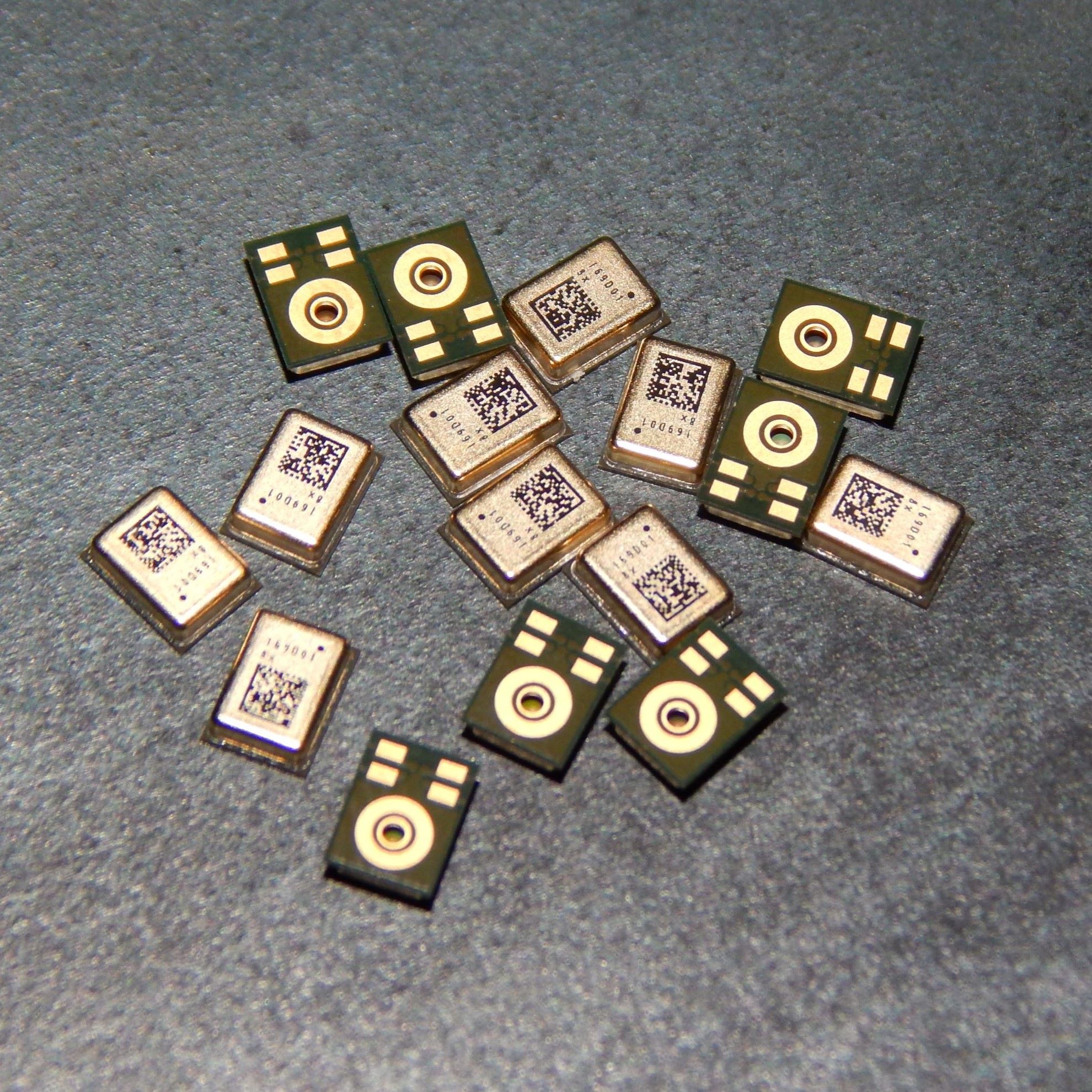
System Architecture & FPD-Link
Each circular microphone array board integrates:
- 16x high-SNR MEMS microphones, positioned for uniform spatial coverage.
- 2x Texas Instruments audio codecs – each codec supports up to 8 microphone channels.
- 1x TI Serializer (DS90UA101) – aggregates multi-channel I²S streams into a single high-speed differential link.
- Automotive Rosenberger RF connector – ensures a shielded, mechanically robust interface to the receiver board.
The receiver board contains:
- 4x TI Deserializers (DS90UA102) – each linked to one microphone board.
- FMC interface – connects directly to a Xilinx FPGA board for real-time capture and DSP.
- Common clocking system – maintains phase alignment across all boards.
Why FPD-Link III was chosen:
Texas Instruments’ FPD-Link technology was selected for its ability to serialize multiple I²S channels over a single twisted-pair differential link, replacing bulky parallel buses.
In this design:
- The serializer multiplexes all I²S channels from the codecs into a high-speed stream.
- The deserializer recovers each I²S channel with precise clock phase alignment.
- This ensures low jitter, phase coherence, and strong EMI immunity, all essential for beamforming and automotive environments.
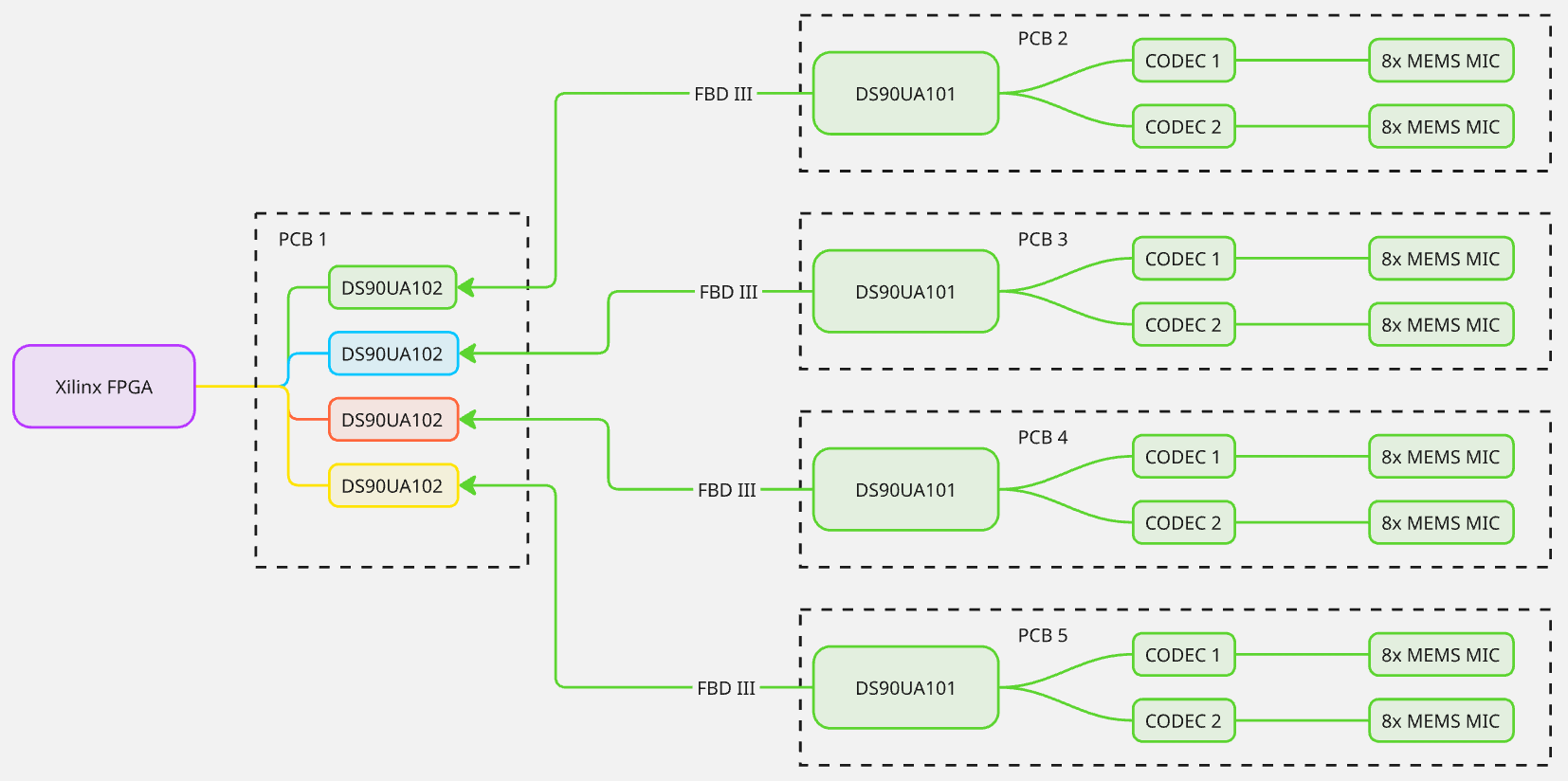
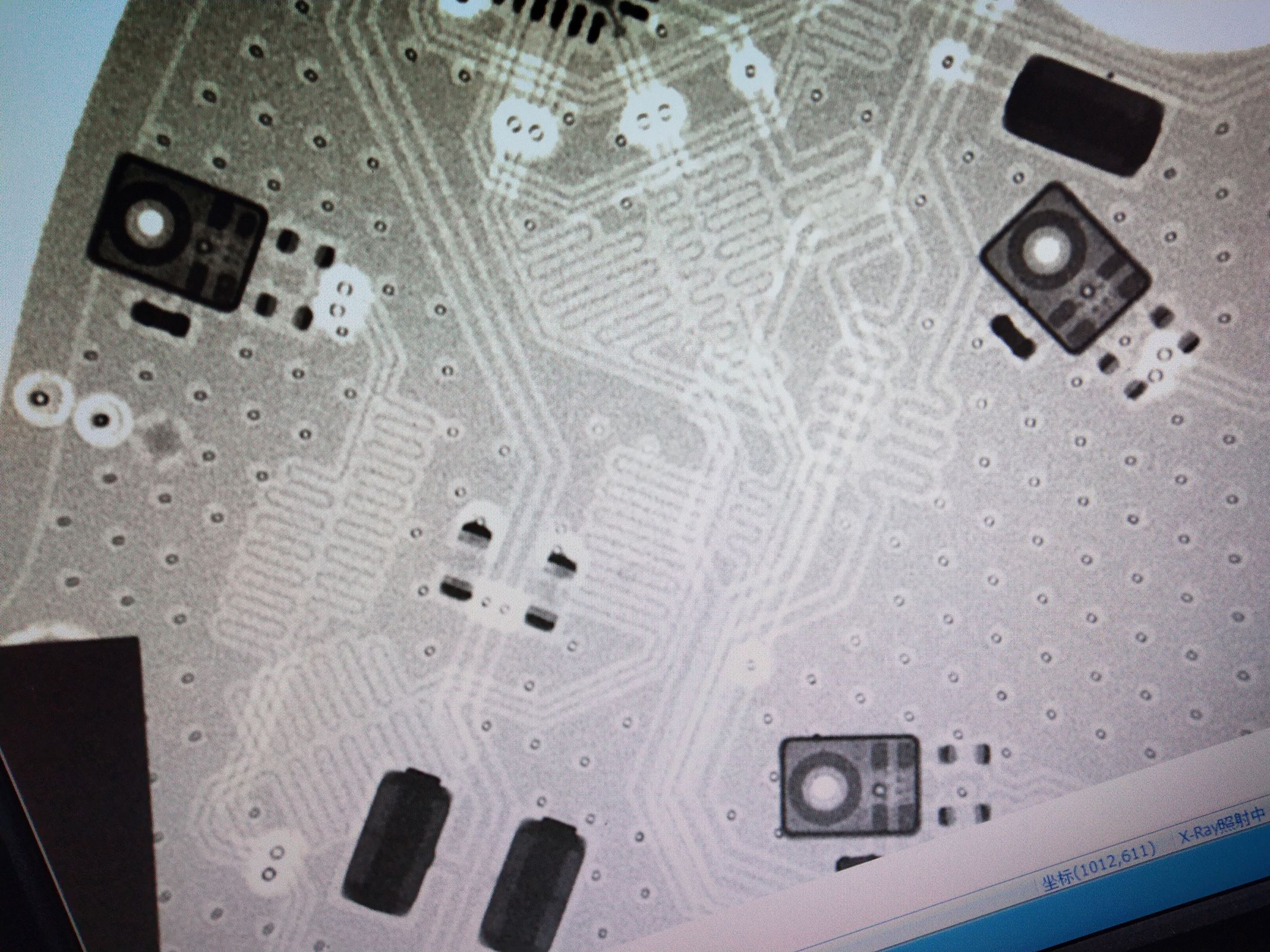
How MEMS Microphones Communicate with the Codec
Each MEMS microphone used in this system is a digital PDM (Pulse Density Modulation) microphone.
This architecture eliminates the need for each microphone to have a full PCM interface and allows tight clock domain control, which is critical for maintaining phase alignment between channels.
PCB Layout & Routing Considerations
Achieving reliable performance required strict adherence to signal integrity and timing rules:
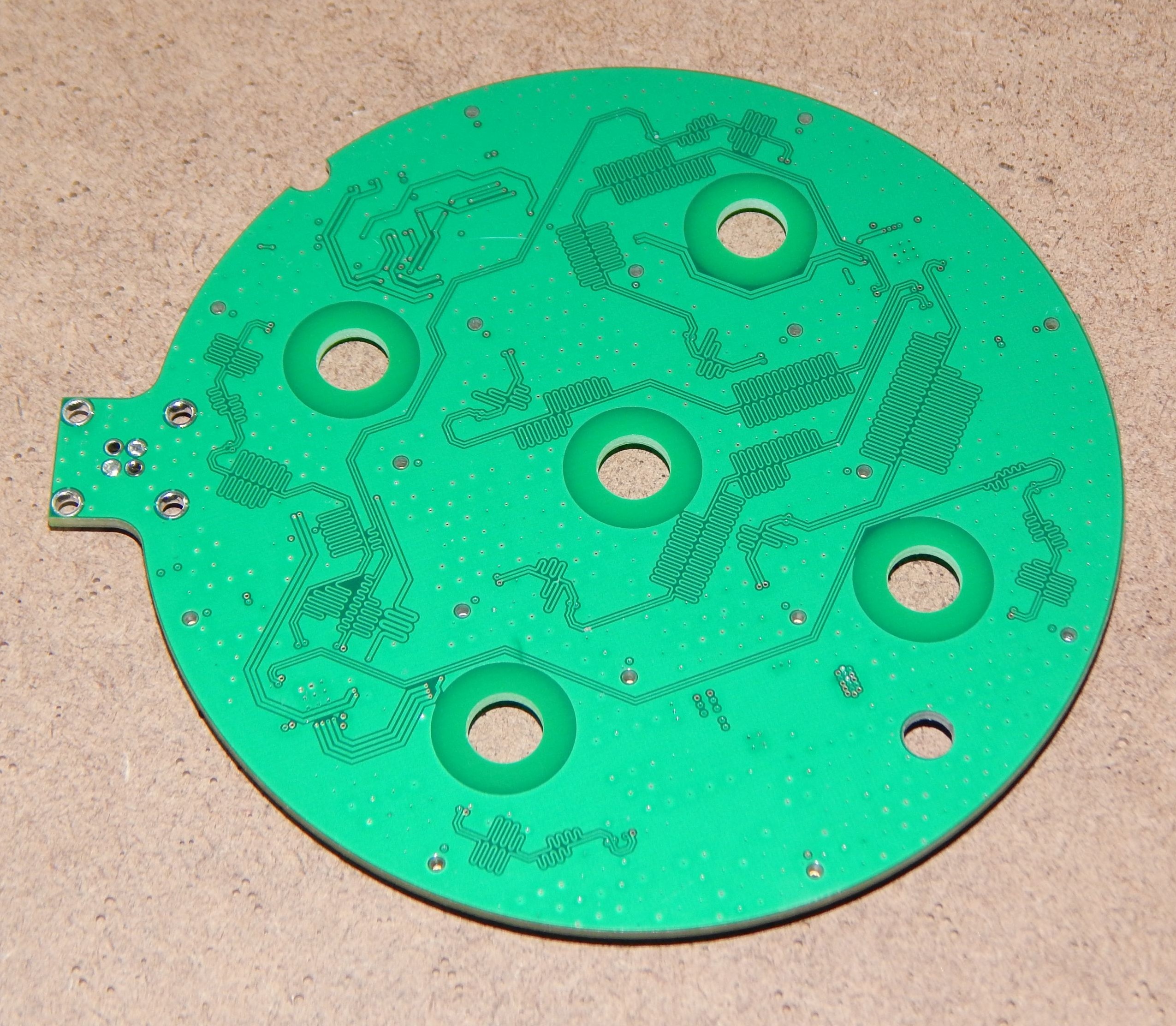
Key Achievements:
- 64-channel synchronized capture at 24-bit/48 kHz
- Low-latency serialized transmission with phase alignment maintained
- EMI-resilient automotive-grade interconnect using Rosenberger connectors
- Reduced cable complexity – single differential link replaces multiple parallel buses
- Scalable design – add arrays without changing the receiver architecture
Applications:
- Automotive acoustic beamforming for noise detection and source tracking
- Interior cabin noise analysis for comfort tuning
- Exterior environmental sound capture for ADAS & AV algorithms
- Dataset acquisition for AI-based acoustic modeling
Outcome:
The final system provided the client with a reliable, high-resolution, phase-accurate multi-channel audio acquisition platform.
Its modular design allowed flexible deployment — from a single 16-mic array to a full 64-channel configuration — without altering the signal processing backend.
Useful Links
